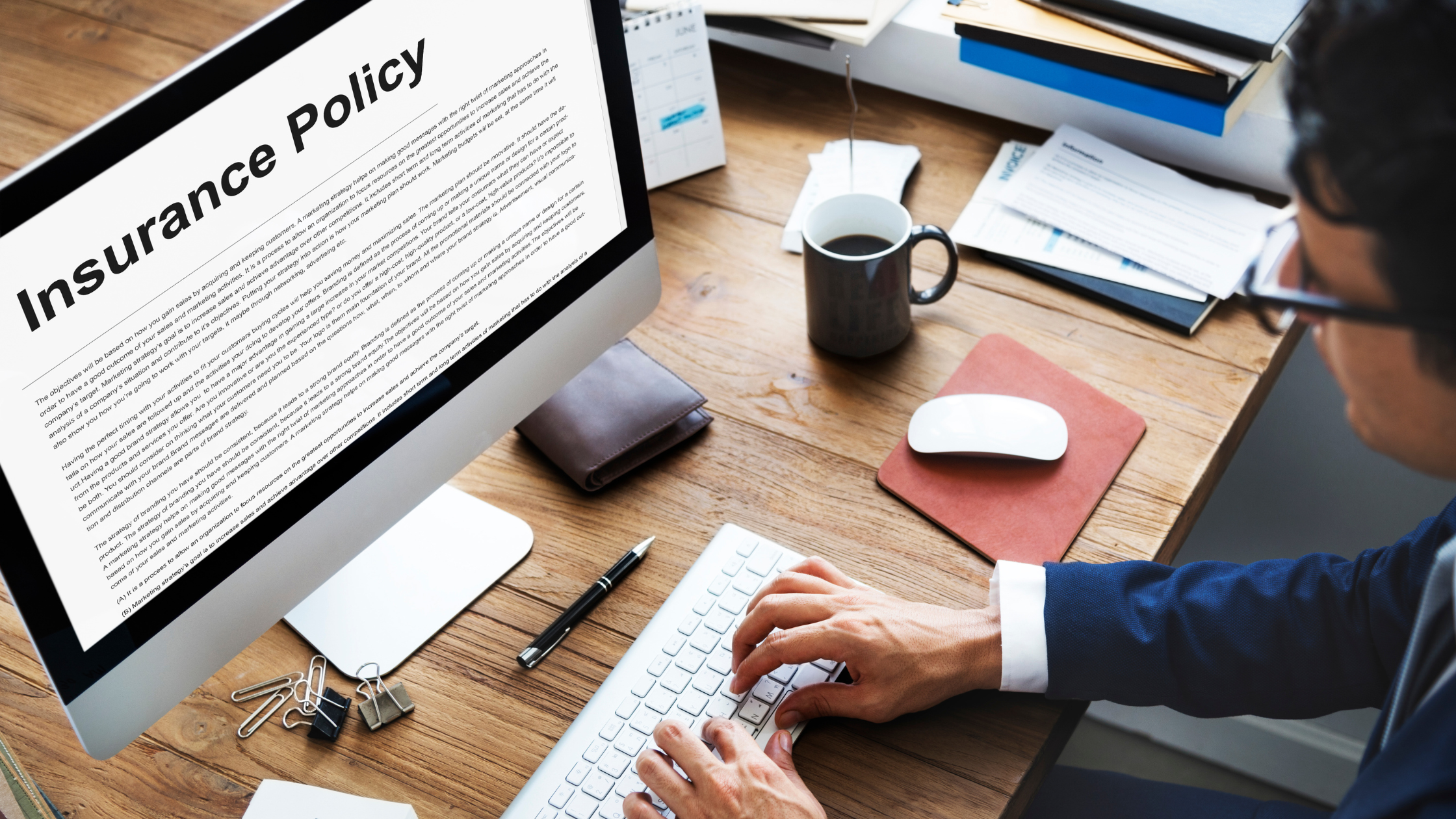It doesn’t matter if you lease it to other businesses or operate your own from it — you need building insurance for your commercial property to protect the structure itself, and in many cases, permanently installed systems and machinery.
Affordable commercial property insurance helps safeguard both your investment and the cash flow it generates.
After all, incidents such as fire, flooding, theft, and accidental damage can not only rack up costly repairs but also disrupt or even shut down your business.
Let’s walk through what you as a CRE property owner or investor need to know when choosing a commercial property insurance policy to keep your buildings covered and your bottom line secure.
What is commercial building insurance?
Commercial building insurance covers damage to your property’s physical structure.
That usually includes the roof, walls, and foundation, and in many cases, built-in fixtures like HVAC systems, electrical panels, and equipment.
Some policies also extend to appliances if they’re considered part of the building.
Insurance for commercial real estate helps you recover after fire, storms, vandalism, or other specific events that disrupt operations or cause serious damage.
What’s covered depends on your policy, but most include a standard set of risks:
- Fire and smoke – Covers damage from fires, including smoke that can ruin interiors even if flames don’t spread far
- Storms, wind, and hail – Includes severe weather events like high winds, tornadoes, or hail that can batter roofs and windows
- Vandalism and theft – Pays for repairs if someone damages the property or steals from it
- Water damage (not flood) – Covers issues like burst pipes or leaks (flooding from storms or rising water usually isn’t included)
- Structural collapse – Applies when part or all of a building gives way unexpectedly
- Explosion – Covers damage from sudden blasts, whether internal or nearby
Not everything is included by default.
Commercial real estate insurance coverage often excludes flood damage, earthquakes, and other large-scale disasters unless you add extra coverage.
You also won’t be covered for problems caused by poor maintenance, normal wear and tear, or anything classified under war or nuclear risks.
Review the fine print and ask questions to make sure you’re fully covered. A low cost commercial property insurance that looks comprehensive at a glance might still leave major risks unprotected.
Key coverage types for CRE investors and owners
It’s important to understand the core components of your policy to avoid coverage gaps that could cost you a lot of money later.
Here’s what you need to know when shopping for insurance for commercial property owners:
1. Building coverage
This is the foundation of your insurance policy. It protects the physical structure — walls, roof, foundation, plumbing, HVAC, elevators — and anything else that is built into the property.
This part of your policy pays to repair or rebuild the building if it is damaged or destroyed.
How much you will get paid depends on how the property is valued:
- Replacement cost (RCV) – This pays to rebuild using materials of similar quality without deducting for age or wear. It gives you the budget to restore the property to its previous condition.
- Actual cash value (ACV) – This subtracts depreciation from the payout. You’ll receive less money than what it would cost to replace the damaged item, which means you’ll have to pay the difference yourself.
RCV commercial building owners’ insurance is usually the better choice if you want full recovery.
2. Business interruption insurance (loss of income)
Loss of income coverage helps you stay afloat if a fire or storm forces your tenants out.
This coverage essentially replaces the rent you would have collected while the building is being repaired, so it’s a good idea to have it if you rely on rental income to meet loan payments or operating expenses.
Make sure your policy:
- covers a realistic repair timeline because building takes time—especially when permitting and inspections slow things down, and
- includes extra expenses for relocating tenants or maintaining operations elsewhere.
Do you own a multifamily building? Check if your commercial apartment building insurance includes coverage for extended vacancy periods and tenant relocation costs.
3. Equipment breakdown coverage
Repair costs can pile up very fast when major systems fail. Make sure that your insurance for commercial real estate protects key components like:
- Boilers and pressure systems
- HVAC equipment
- Elevators and escalators
- Electrical panels
- Refrigeration units
4. Liability insurance
Liability insurance helps cover legal and medical costs if someone gets hurt on your property or claims that your building caused damage. Here are just a few common examples of situations that may lead to liability claims:
- A visitor slipping on a wet floor
- Water from your property damaging a neighboring unit
- Faulty lighting or handrails causing injuries to guests or tenants
Make sure that your liability limits are high enough to cover worst-case scenarios especially if you manage high-traffic properties or industrial spaces.
5. Ordinance or law coverage
Rebuilding after damage isn’t always straightforward because local building codes may have changed since your property was built.
You need this coverage to handle the cost of bringing your building up to current code, because standard insurance only pays to restore what was originally there.
Without this type of commercial property risk management and insurance, you might have to cover those updates yourself.
6. Flood and earthquake insurance
Floods and earthquakes aren’t covered by standard policies, so you will need separate insurance if your property is in a high-risk zone.
These policies may be the only way to avoid major financial loss in vulnerable locations, especially with extreme weather and natural disasters becoming more common.
Emerging trends in commercial building insurance in 2025
1. Rising premiums
In just the first ten months of 2024, 24 climate-related disasters each caused over $1 billion in losses.
Building material costs have increased by an average of 19% since 2020 as well. These rising costs push up policy valuations and lead directly to more expensive commercial building insurance costs.
2. Growing adoption of parametric insurance — faster payouts tied to event triggers
Parametric insurance pays out based on measurable events like (wind speed, rainfall, or seismic activity) rather than waiting for someone to assess the damage in person.
That means that funds are released quickly, giving you the resources to start cleanup or repairs right away.
These policies are gaining traction among owners in the energy and agricultural space, as well as those whose CRE assets are exposed to extreme weather.
Smart buildings are especially well suited to parametric models because they can use built-in sensors to feed real-time data into trigger mechanisms, which helps speed up both response and recovery.
3. Use of IoT-based monitoring for proactive risk management (leak detection, structural health)
Commercial buildings are increasingly using IoT sensors to prevent problems before they escalate. These tools can continuously monitor:
- Leaks in plumbing and water systems
- Structural integrity using vibration sensors
- Indoor environment through HVAC monitoring
IoT systems spot risks early to reduce both the frequency and severity of claims.
Many insurers now offer premium discounts or more favorable terms for properties that use verified smart monitoring solutions.
4. New emphasis on cyber liability coverage for buildings with smart systems
The risk of cyber intrusion grows as more critical systems — elevators, HVAC, access control, lighting, etc. — go online.
What used to be physical infrastructure now has digital vulnerabilities.
If you own a smart building, it’s worth looking at cyber liability policies that extend beyond IT to include operational technology.
5. Increased scrutiny on property valuations — owners need to ensure policies reflect current replacement costs
Insurers are paying closer attention to how properties are valued as inflation drives up rebuilding costs. If your property is underinsured, you could be left covering the shortfall when it’s time to rebuild.
Conduct annual appraisals and adjust policy limits to reflect current replacement values if you want to stay ahead. Keeping valuations up to date is one of the simplest ways to avoid claim disputes and coverage gaps.
How to choose the right commercial building insurance policy
Let’s now discuss how to choose and how to get building insurance:
1. Work with a specialist CRE insurance broker.
Whether you’re insuring a warehouse, office tower, retail plaza, or apartment complex, a CRE specialist can help you make more informed choices because they can bring to the table property-specific insight.
They’ll help you pinpoint risks tied to your type of building based on its design and use.
They can also connect you with insurers that can give you tailored coverage and negotiate terms that protect your interests.
And they’ll also be the ones guiding you through the process if you ever need to file a claim.
2. Conduct a detailed risk assessment.
You’ll get better quotes (and better coverage) when you fully understand your building’s risk profile.
- Location – Is your building exposed to floods, earthquakes, or hurricanes? Your ZIP code can affect both pricing and eligibility.
- Building age and construction – Older properties may need additional coverage for code upgrades or have higher risk tied to aging infrastructure.
- Occupancy – A commercial kitchen or dental clinic will carry different risks than a tech office or coworking space.
- Tenant mix – What do your tenants do in the space? Do they operate heavy machinery or store hazardous materials? These factors can increase your risk of liability claims.
3. Balance premium costs vs. coverage gaps.
Don’t make the mistake of underinsuring to save money. If your broker recommends higher limits or additional coverage, ask them to explain why.
Don’t skimp on core policies like replacement-cost building coverage, business interruption, or liability.
4. Understand co-insurance clauses and avoid potential penalties.
Co-insurance clauses — which require you to carry coverage equal to a set percentage of your building’s total value (often 80% or more) — can reduce your payout if you’re underinsured.
Talk to your broker about how co-insurance works and make sure your policy keeps you in the clear.
5. Regularly review and update insurance coverage annually and when making property improvements.
Your property changes over time so it only makes sense for your policy to change, too. So set aside a meeting each year to go over your policy with your broker and discuss any occupancy changes or valuation updates.
Did your property go from retail to office? Has your tenant mix changed significantly? These factors change your risk profile, so it’s a good idea to adjust your policy, too.
Be sure to notify your insurer if you’ve made any upgrades such as new HVAC, a building expansion, upgraded security systems, etc.
These changes may increase your asset’s value and your risk exposure as a consequence. Your insurer needs to know.
6. If using financing or refinancing, ensure that lender insurance requirements are met.
Read the insurance section of your loan documents line by line and note the exact types of coverage, policy limits, and required endorsements.
Then, send that list to your insurance broker and ask them to confirm that your policy matches every condition.
Save digital copies of your insurance certificates and keep them handy, as your lender may ask for updates throughout the loan term.
Conclusion
With rebuild costs rising and insurers tightening standards, now is the time to make sure that your commercial property insurance policy reflects your building’s current value and includes loss of income coverage (if you rely on rental revenue).
And if you’re buying new assets, don’t copy-paste your old policy — you have to update your coverage to fit the risks of that new building.
Looking for types of insurance for your next CRE investment?
Contact the Private Capital Investors team to learn how we can help protect and grow your portfolio.





